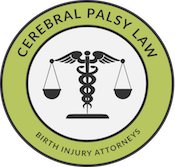What Is a Nuchal Cord?
A nuchal cord is a pregnancy, labor and delivery complication that occurs when the umbilical cord wraps around the baby’s neck in a 360 degree loop. Nuchal cords are classified in the following ways:
- Type A nuchal cord: Type A nuchal cords occur when the umbilical cord wraps around the baby’s neck in an unlocked, 360 degree loop. These types of nuchal cords are able to unravel themselves naturally.
- Type B nuchal cord: Type B nuchal cords occur when the umbilical cord wraps around the baby’s neck into a locked, 360 degree loop that cannot undo itself. Type B nuchal cords are also known as true knots.
Since the umbilical cord transfers oxygen and nutrients from the placenta to the baby, disruption in the normal flow of blood and gas may lead to severe injuries such as hypoxic ischemic encephalopathy (HIE) and cerebral palsy (CP).
If your child’s cerebral palsy or permanent injury resulted from a nuchal cord or true knot, you may have grounds for a medical malpractice claim. We encourage you to reach out to our Michigan nuchal cord lawyers with any questions, concerns, or case inquiries—our Michigan birth injury lawyers will provide you with a free case review and inform you of your legal options. The nuchal cord lawyers at Michigan Cerebral Palsy Attorneys are available to speak with you 24/7—contact our law offices in any of the following ways:
- Complete our online contact form here
- Live Chat with our lawyers by pressing the tab to the left of your screen
- Call us toll-free at (888) 592-1857
What Injuries Are Associated with Nuchal Cords?
Nuchal cords can range from mild to severe. Some of the more dangerous consequences that can lead to cerebral palsy include:
- Umbilical cord prolapse, which occurs when the umbilical cord enters the birth canal before the baby during delivery, limiting oxygen to the baby.
- Vasa previa, in which the umbilical cord blood vessels cross the cervix under the baby and tear, resulting in limited oxygen flow and fetal distress.
- Hypoxic ischemic encephalopathy (HIE): Ischemia (restricted fetal blood flow) and hypoxia (decreased flow of oxygen) occur when tight cord entanglement limits blood and oxygen flow through the neck artery, causes congestion of venous blood flow, or compresses the umbilical cord.
- Decreased fetal development and movement
What Causes a Nuchal Cord?
- Long umbilical cord
- Macrosomia, which is a condition in which a baby is large for his or her gestational age.
- Multiple fetuses: Carrying multiple babies almost always complicates cord placement.
- Nutritional deficiencies, which deplete the cord’s protective barrier
- Excessive amniotic fluid surrounding the baby (hydramnios)
- Malpresentation, such as breech presentation, may confuse cord placement.
What Are the Signs of a Nuchal Cord?
Most commonly, nuchal cords are signified when there is decreased fetal activity after week 37. Furthermore, a fetal monitor will detect a nuchal cord if the knot occurs during labor.
How Are Nuchal Cords Diagnosed and Treated?
Physicians should identify and diagnose nuchal cords during routine obstetrical ultrasounds. When attempting to correct a nuchal cord, it is most important to avoid umbilical cord compression during delivery. There are a number of ways physicians can maneuver a baby during delivery in order to safely deliver her with a nuchal cord, and failure to do so reflects negligence. If vaginal delivery is prolonged and threatens the baby’s health and safety, physicians must order an emergency C-section.
Nuchal Cord Birth Injuries & Medical Malpractice
Michigan Lawyers Specializing in Nuchal Cord Cases
Medical professionals are obligated to properly evaluate the hazards of nuchal cords and find safe means of delivery for babies that have them. Unfortunately, birth injuries from labor and delivery problems like nuchal cords are often the result of negligence on the part of a medical professional.
For reference, the following incidents are considered negligent:
- Failure of a physician to look for or identify a nuchal cord during routine obstetrical ultrasounds
- Failure to order an emergency C-section if vaginal delivery threatens the baby’s health and safety
- Failure to properly inform the mother about dangers of nuchal cords and alternative delivery options
- Failure to obtain informed consent from a mother for a C-section
If you experienced these incidents or similar situations during your delivery, don’t hesitate to contact our qualified Michigan nuchal cord lawyers. Our attorneys will evaluate your case for free and answer any of your legal questions. Call us toll-free at (888) 592-1857 or fill out this contact form.
Sources:
- Nelson KB, Grether JK. Potentially asphyxiating conditions and spastic cerebral palsy in infants of normal birth weight. Am J Obstet Gynecol 1998; 179:507.
- Verdel MJ, Exalto N. Tight nuchal coiling of the umbilical cord causing fetal death. J Clin Ultrasound 1994; 22:64.
- Dhar KK, Ray SN, Dhall GI. Significance of nuchal cord. J Indian Med Assoc 1995; 93:451.
- Collins JH. Nuchal cord type A and type B. Am J Obstet Gynecol 1997; 177:94.
- Jauniaux, E., Ramsay, B., Peellaerts, C., & Scholler, Y. (2008). Perinatal features of pregnancies complicated by nuchal cord. American journal of perinatology, 12(04), 255-258.
- Zahoor, Farnaz, Zakia Minhas, and Adil Zaki. “PERINATAL OUTCOME OF NUCHAL CORD.” Journal of Postgraduate Medical Institute (Peshawar-Pakistan) 27.2 (2013).
- Schaffer, Leonhard, MD, and Roland Zimmermann, MD. “Nuchal Cords.” Nuchal Cords. Ed. Susan M. Ramin, Deborah Levine, and Vanessa A. Barss. UpToDate, n.d. Web. 18 Sept. 2014.
